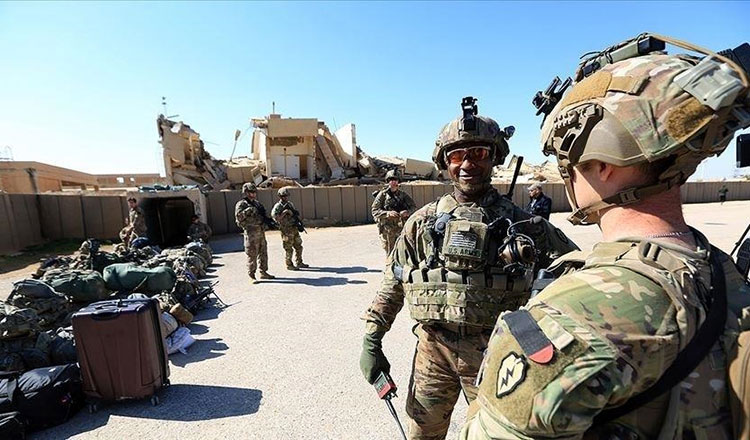FALL OF AFGHANISTAN: WASHINGTON, USA- Weapon seizures ‘massive boon’ for Taliban as cities fall
The United States spent billions supplying the Afghan military with the tools to defeat the Taliban, but the rapid capitulation of the armed forces means that weaponry is now fuelling the insurgents’ astonishing battlefield successes.
“We provided our Afghan partners with all the tools — let me emphasise: all the tools,” US President Joe Biden said when defending his decision to withdraw American forces and leave the fight to the locals.
But Afghan defence forces have shown little appetite for that fight and, in their tens of thousands, have been laying down their arms — only for the Taliban to immediately pick them up.
The Taliban’s social media is awash with videos of Taliban fighters seizing weapons caches — the majority supplied by Western powers.
Footage of Afghan soldiers surrendering in the northern city of Kunduz shows army vehicles loaded with heavy weapons and mounted with artillery guns safely in the hands of the insurgent rank and file.
In the western city of Farah, fighters patrolled in a car marked with an eagle swooping on a snake — the official insignia of the country’s intelligence service.
While US forces took the “sophisticated” equipment with them when they withdrew, the Taliban blitz has handed the group “vehicles, humvees, small arms and light weapons, as well as ammunition”, Justine Fleischner of weapons-tracking group Conflict Armament Research, told AFP.
– ‘Massive boon’ –
Experts say such hauls — on top of unacknowledged support from regional allies such as Pakistan — has given the Taliban a massive boost.
The weapons will not only help the Taliban’s march on Kabul but “strengthen its authority” in the cities it has captured, said Raffaello Pantucci, senior fellow at the S Rajaratnam School of International Studies.
With US troops all but gone, the Taliban now find themselves flush with American-supplied tools, without having to raise a single penny.
“It is incredibly serious. It is clearly going to be a massive boon to them,” he said.
Some of that weaponry is now being brazenly paraded ahead of the US troops’ 9/11 withdrawal deadline by insurgents who have maintained ties with Al Qaeda, the group behind the 2001 terror attacks.
Washington had prepared for the Taliban to claim its weapons, but the rapid fall of cities was its most dire scenario, Jason Amerine, who led US special forces in overthrowing the Taliban in 2001, told AFP.
“The US equipped the ANA with the assumption that weapons and materiel might fall into Taliban hands,” he said, referring to the Afghan National Army.
“The current crisis was a worst-case scenario considered when making procurement decisions.”
– Propaganda –
At Kunduz airport, a Taliban fighter on a red motorbike, head-to-toe in insurgent dress, was filmed staring at a military helicopter sitting on the tarmac.
It is a picture of jubilation mirrored across insurgent-held territory.
While the group will continue to show off these big prizes, the aircraft at least will have no impact on the battlefield without pilots.
“They will be for propaganda purposes only,” former CIA counter-terrorism analyst Aki Peritz told AFP.
More useful will be the light arms and vehicles used to navigate the country’s rugged terrain.
Coupled with the army’s dwindling morale, they will boost the threat the Taliban pose to the Western-backed government.
As the crisis unfolds, Biden’s administration says it will still equip an Afghan military that appears on the verge of collapse.
Observers of the Middle East have seen this transfer of arms play out before.
After the US withdrawal from Iraq, the Islamic State (IS) group overran the Iraqi city of Mosul in mid-2014, seizing US-supplied guns and humvees.
The jihadists used their gains to build an Iraqi-Syrian caliphate the size of Belgium.
Like IS fighters in Mosul, joyous Taliban recruits are now posing for photographs with enemy munitions in the newly won cities in all corners of the country.
“This retreat is turning into a rout,” Peritz said.
bur-jfx/fox/lb/leg
Timeline: The Taliban’s rapid advance across Afghanistan

(Reuters) – Taliban insurgents control an estimated 65% of Afghan territory, after making rapid advances against local forces who are largely fending for themselves as foreign troops withdraw.
Following are some of the major milestones in the Islamist militant movement’s advance in recent months. Other deadly attacks occurred, some blamed on the Taliban and some on other jihadist groups including an offshoot of Islamic State.
Talks between the Taliban and the Afghan government on a political understanding that could lead to a peace deal, backed by the United States and its allies, have failed to make significant progress.
– April 14 – President Joe Biden announces U.S. troops will withdraw from Afghanistan starting on May 1 and ending on Sept. 11, bringing America’s longest war to a close. It was an extension of the previous withdrawal deadline of May 1 agreed between the United States and the Taliban.
– May 4 – Taliban fighters launch a major offensive on Afghan forces in southern Helmand province. They also attack in at least six other provinces.
– May 11 – The Taliban capture Nerkh district just outside the capital Kabul as violence intensifies across the country.
– June 7 – Senior government officials say more than 150 Afghan soldiers are killed in 24 hours as fighting worsens. They add that fighting is raging in 26 of the country’s 34 provinces.
– June 22 – Taliban fighters launch a series of attacks in the north of the country, far from their traditional strongholds in the south, and the UN envoy for Afghanistan says they have taken more than 50 of 370 districts.
– July 2 – American troops quietly pull out of their main military base in Afghanistan – Bagram Air Base, an hour’s drive from Kabul. It effectively ends U.S. involvement in the war.
– July 5 – The Taliban say they could present a written peace proposal to the Afghan government as soon as August.
– July 21 – Taliban insurgents control about a half of the country’s districts, according to the senior U.S. general, underlining the scale and speed of their advance.
– July 26 – The United States vows to continue to support Afghan troops “in the coming weeks” with intensified airstrikes to help them counter Taliban attacks.
– July 26 – The United Nations says nearly 2,400 Afghan civilians were killed or wounded in May and June in escalating violence, the highest number for those months since records started in 2009.
– Aug. 6 – Zaranj in the south of the country becomes the first provincial capital to fall to the Taliban in years. Many more are to follow in the ensuing days, including the prized city of Kunduz in the north.
The Taliban never fully controlled the north of the country when they were in power, and seem intent on securing it this time possibly before closing in on the capital.
– Aug. 13 – Four more provincial capitals fall in a day, including Kandahar, the country’s second city and spiritual home of the Taliban. In the west, another key city, Herat, is overrun and veteran commander Mohammad Ismail Khan, one of the leading fighters against the Taliban, is captured.
Western countries prepare to send troops to help evacuate embassy staff from the capital, Kabul.
(Compiled by Kabul bureau; Editing by Mike Collett-White)
On Lithuania’s border, a former Afghan soldier is caught between war and politics
By Gabriela Baczynska
KAZITISKIS, Lithuania (Reuters) – As Taliban fighters seized a series of provincial cities across Afghanistan, thousands of kilometres away in a makeshift refugee camp in eastern Lithuania, former Afghan soldier Fazel Rahman looked back on a war he abandoned two months ago.
He said he had been warned by Taliban sympathizers in his home village that his life would be in danger unless he joined them, but he didn’t see that as an option so he decided to follow the path that tens of thousands of other Afghans have already taken and make his way to Europe.
“The situation in our country has got worse. The Taliban killed my cousin,” said Fazel Rahman, who served for 15 years in the Afghan army. “I fled with my kids because they threatened me, warning me to leave my duty.”
Now waiting in a former school building in the village of Kazitiskis in the Ignalina region of Lithuania, he has found himself in the middle of a standoff between Belarus and the European Union.
The EU accuses Belarus President Alexander Lukashenko of using the refugee crisis to pressure the bloc to reverse sanctions it placed on the country over a disputed presidential election last August and its treatment of political opposition.
With the Afghan capital Kabul now close to being besieged by the Taliban after a lightning campaign that followed the withdrawal of most U.S. forces last month, politicians in Europe are becoming increasingly concerned that more irregular migrants like Fazel Rahman may come.
The European Union border agency Frontex has already noted an increase in people coming from Afghanistan and Syria through the Western Balkans.
Hanging around with about 130 others in a metal enclosure outside the former school building, Fazel Rahman waits, chatting with others as laundry dries on the fence and children play in the dust and mud.
The camp is fitted with foldout beds and showers, and it provides a temporary haven from the harsh journey, during which he said he was beaten severely by border guards.
“Even in a war, soldiers don’t treat people like I was treated,” he said.
(Editing by Aurora Ellis)

















